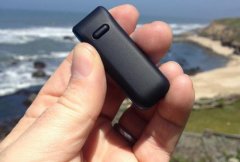What does your Ecological footprint measure?
 We all know we need to change our lifestyles and become more sustainable. We talk about it, and some of us actively try to, but honestly, most of us don't. Living more sustainably clearly needs to be easier, more interesting and more fun. This is within reach.
We all know we need to change our lifestyles and become more sustainable. We talk about it, and some of us actively try to, but honestly, most of us don't. Living more sustainably clearly needs to be easier, more interesting and more fun. This is within reach.
Technology is evolving to enable us to measure our impacts on the environment day-to-day and broadcast the results on social media to inspire a race to the top. Meanwhile, corporations can use this info to reward positive behavior and generate goodwill. Here are some ideas for how.
Carbon footprint calculators fall short
A common assumption is that if people knew exactly what their carbon footprint was, or how big it was compared to others, they would feel motivated to make lifestyle changes.
Loads of free carbon footprint calculators have been available online for years. Some of the most popular in the U.S. come from the Nature Conservancy, US EPA, Carbon Footprint, Global Footprint Network, Center for a Sustainable Economy, Berkeley, Terra Pass and Conservation International.
Yet very few people have used them and they seem to have fallen short of inspiring significant behavioral change. There are surely a number of reasons for this, but several of their shortcomings provide insight into what might work better.
First, vast differences in their methodologies mean that the same person will get a huge range of scores from different calculators, making it hard to know how one is actually doing. For example, my lifestyle produces anywhere from 12 to 30 tons of CO2 per year, according to the eight calculators mentioned above.
Second, the questions are usually too general to detect most behavioral changes that can lower our environmental impact, such as changing light bulbs. This means that we miss getting the satisfaction of seeing our score improve.
Third, accuracy aside, the final score is abstract. Carbon is an intangible concept for most of us. How much is 12 to 30 tons of CO2, anyway? Because we all want to know how we measure up, meaningful comparisons can help make these numbers more relevant, but many calculators do a poor job of this.
|
144 ways to reduce your organization's ecological footprint: A guide for small and medium sized organizations interested in adopting socially and ... practices (Middle English Edition) Book (Humus Amoris)
|
|
AceList® Glass Bottle Cutter Scoring Machine Cutting Tool Wine Bottle Cutter for DIY Reuse Recycle Bear Wine Bottle Jars Creating Stained Glass, Tumblers, Bottle Planters, Bottle Lamps, Candle Holders Home (AceList)
|
 The Happy Planet Index (HPI) is an index of human well-being and environmental impact that was introduced by the New Economics Foundation (NEF) in July 2006. The index is designed to challenge well-established indices of countries’ development, such as Gross Domestic Product (GDP) and the Human Development Index (HDI), which are seen as not...
The Happy Planet Index (HPI) is an index of human well-being and environmental impact that was introduced by the New Economics Foundation (NEF) in July 2006. The index is designed to challenge well-established indices of countries’ development, such as Gross Domestic Product (GDP) and the Human Development Index (HDI), which are seen as not...